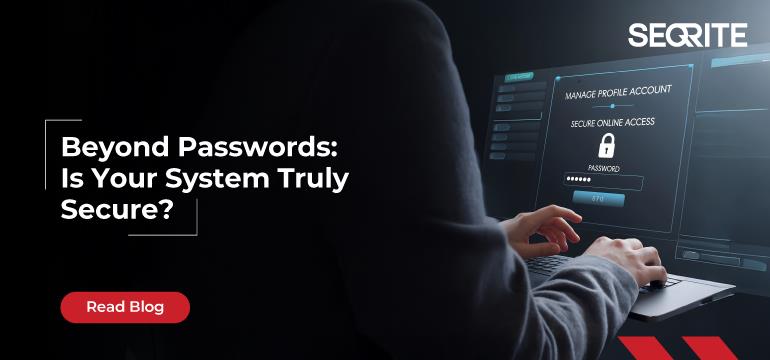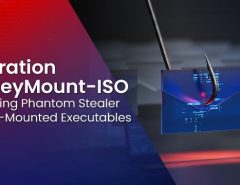The cybersecurity landscape is constantly evolving, with traditional methods of securing user accounts—such as passwords—proving increasingly inadequate against the growing sophistication of cyberattacks. In response, authentication systems that go Beyond Passwords, i.e., password-less, have emerged as a promising solution. By eliminating the need for passwords altogether, these systems aim to offer a more secure and user-friendly alternative. However, as with any new technology, questions remain about their security, especially as cybercriminals develop new techniques to bypass even the most advanced authentication methods.
What is Passwordless Authentication?
Passwordless authentication is a method of verifying a user’s identity without requiring them to enter a traditional password. Instead, it relies on other forms of identification that are considered more secure and less susceptible to common attacks. Some of the most popular methods include:
- Biometrics: This includes facial recognition, fingerprint scanning, and iris scanning.
- Hardware Tokens: Physical devices, such as USB security keys, that generate one-time passcodes or enable access to online accounts.
- Push Notifications: Users authenticate via a simple push notification sent to a trusted device, confirming their identity with a click.
- One-Time Passcodes (OTP): A temporary, time-sensitive code sent via email or SMS that can be used to gain access.
The main advantage of these methods is that they don’t require a user to remember or manage passwords, which reduces the risks associated with weak or reused passwords and makes the login process faster and more convenient.
Strengths of Passwordless Authentication Systems
- Enhanced Security: Passwordless methods, like biometrics and hardware tokens, reduce risks from weak, reused, or phished passwords, lowering unauthorized access chances.
- No Password Fatigue: Eliminates the need to remember or reuse passwords, reducing brute-force and credential-stuffing attacks.
- Reduced Phishing Risk: Without passwords, attackers can’t steal credentials through fake websites.
- Convenience: Faster and easier login via biometrics or push notifications enhances user experience, driving adoption.
Potential Vulnerabilities in Passwordless Authentication
While passwordless authentication systems offer several advantages, they are not without their vulnerabilities. As technology advances, attackers are finding new ways to circumvent these methods.
- Biometric Spoofing: Cybercriminals bypass biometrics by using 3D-printed faces, fake fingerprints, and deepfakes. Advanced liveness detection helps but isn’t foolproof.
- Device Compromise: Hacked trusted devices can lead to unauthorized access. Secure devices with encryption, anti-theft tools, and MFA.
- Social Engineering: Attackers exploit human psychology to trick users into approving logins or revealing sensitive info, bypassing passwordless security.
- Device Loss/Theft: Lost or stolen devices can lead to breaches. Use safeguards like MFA, remote wipe, and recovery options.
- MFA Fatigue: Excessive prompts may lead to careless approvals, weakening security. Implement MFA strategically.
How Seqrite Enhances Security in a Passwordless World
As businesses and individuals adopt passwordless authentication systems, it’s important to remember that no security solution is entirely risk-free. This is where Seqrite Endpoint Protection comes into play. By providing robust protection against malware, ransomware, phishing, and other cybersecurity threats, Seqrite / Quick Heal helps users safeguard their devices and accounts, even in a passwordless world.
- Virus and Ransomware Defense: Seqrite’s robust protection actively blocks ransomware and malware, preventing them from exploiting vulnerabilities or compromising sensitive data, even if a device is breached by other means.
- Browsing and Phishing Protection: Seqrite enhances password-less security by identifying and blocking malicious and phishing attempts. It safeguards users from fake websites and deceptive emails designed to steal personal information or trick them into approving unauthorized actions.
- Safe Online Transactions: Seqrite provides an isolated, secure environment for online transactions, adding a vital layer of defense against hacking attempts and fraudulent activities for users leveraging passwordless authentication.
Conclusion
Passwordless authentication systems represent a significant step forward in improving online security, but they are not a silver bullet. While they reduce the risks associated with passwords, they also introduce new vulnerabilities that need to be addressed. As we move deeper into 2025, it is crucial for both individuals and businesses to understand the strengths and weaknesses of passwordless systems and to complement them with additional security measures, like Seqrite Endpoint Protection.
Authors
Umar Khan A
Niraj Lazarus Makasare
Dixit Ashokbhai Panchal
Sumit Patil
Matin Tadvi



